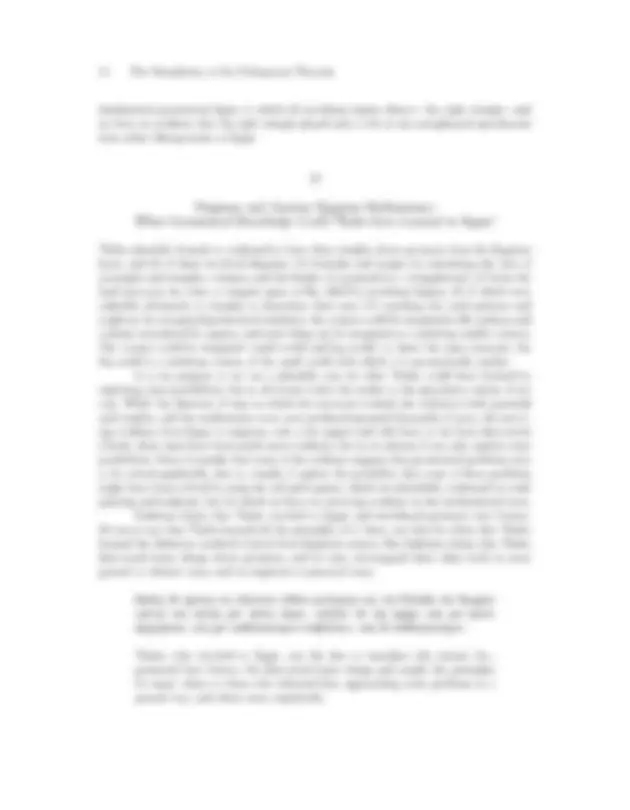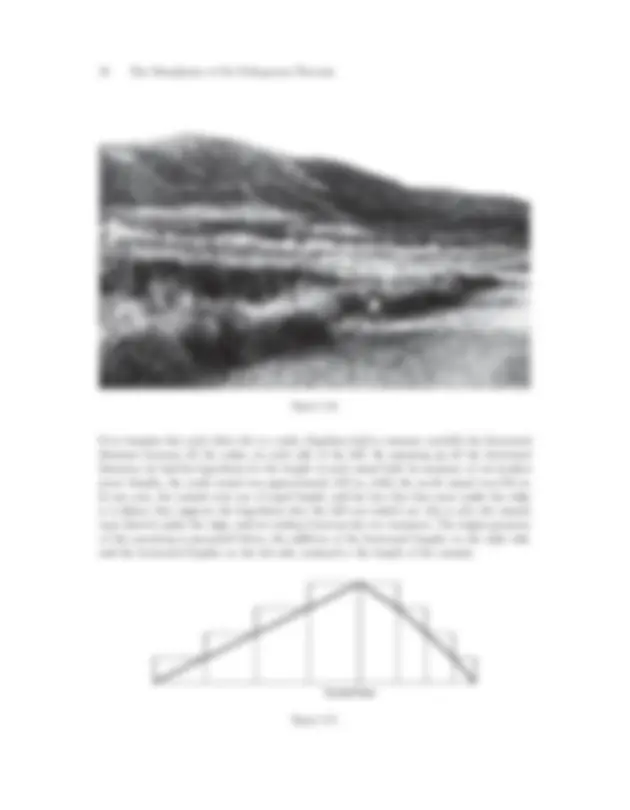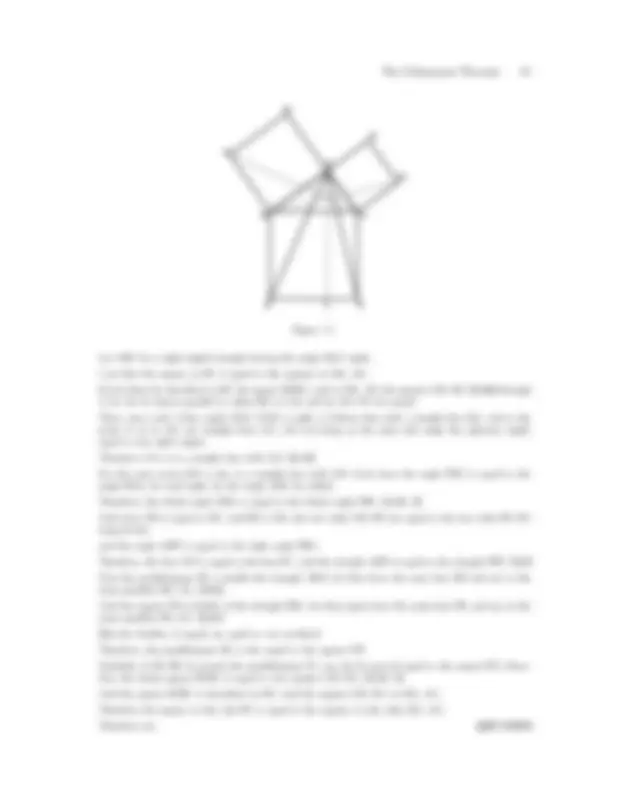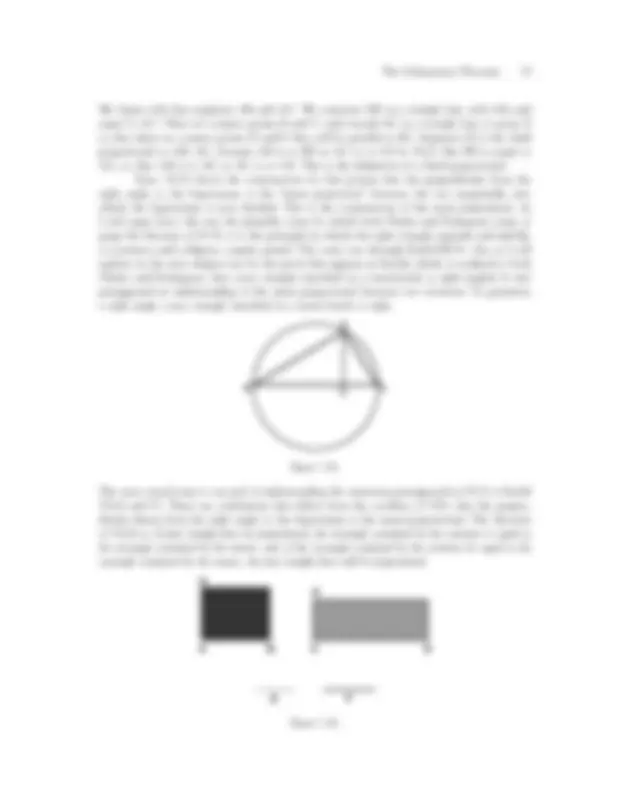






























































































Estude fácil! Tem muito documento disponível na Docsity

Ganhe pontos ajudando outros esrudantes ou compre um plano Premium


Prepare-se para as provas
Estude fácil! Tem muito documento disponível na Docsity
Prepare-se para as provas com trabalhos de outros alunos como você, aqui na Docsity
Os melhores documentos à venda: Trabalhos de alunos formados
Prepare-se com as videoaulas e exercícios resolvidos criados a partir da grade da sua Universidade
Responda perguntas de provas passadas e avalie sua preparação.

Ganhe pontos para baixar
Ganhe pontos ajudando outros esrudantes ou compre um plano Premium
Comunidade
Peça ajuda à comunidade e tire suas dúvidas relacionadas ao estudo
Descubra as melhores universidades em seu país de acordo com os usuários da Docsity
Guias grátis
Baixe gratuitamente nossos guias de estudo, métodos para diminuir a ansiedade, dicas de TCC preparadas pelos professores da Docsity
como todos sabesmo pitágoras fue un gran matemático griego
Tipologia: Notas de aula
1 / 301

Esta página não é visível na pré-visualização
Não perca as partes importantes!





























































































Published by State University of New York Press, Albany
© 2017 State University of New York
All rights reserved
Printed in the United States of America
No part of this book may be used or reproduced in any manner whatsoever without written permission. No part of this book may be stored in a retrieval system or transmitted in any form or by any means including electronic, electrostatic, magnetic tape, mechanical, photocopying, recording, or otherwise without the prior per- mission in writing of the publisher.
For information, contact State University of New York Press, Albany, NY www.sunypress.edu
Production, Ryan Morris Marketing, Anne M. Valentine
Library of Congress Cataloging-in-Publication Data
Names: Hahn, Robert, 1952– author. Title: The metaphysics of the Pythagorean theorem : Thales, Pythagoras, engineering, diagrams, and the construction of the cosmos out of right triangles / by Robert Hahn. Description: Albany, NY : State University of New York, 2017. | Series: SUNY series in ancient Greek philosophy | Includes bibliographical references and index. Identifiers: LCCN 2016031414 | ISBN 9781438464893 (hardcover : alk. paper) | ISBN 9781438464916 (ebook) Subjects: LCSH: Philosophy, Ancient. | Pythagoras. | Thales, approximately 634 B.C.– approximately 546 B.C. | Euclid. | Mathematics, Greek. | Pythagorean theorem. Classification: LCC B188 .H185 2017 | DDC 182—dc LC record available at https://lccn.loc.gov/
10 9 8 7 6 5 4 3 2 1
Contents
Preface ix
Acknowledgments xv
Introduction Metaphysics, Geometry, and the Problems with Diagrams 1
A. The Missed Connection between the Origins of Philosophy-Science and Geometry: Metaphysics and Geometrical Diagrams 1 B. The Problems Concerning Geometrical Diagrams 4 C. Diagrams and Geometric Algebra: Babylonian Mathematics 7 D. Diagrams and Ancient Egyptian Mathematics: What Geometrical Knowledge Could Thales have Learned in Egypt? 12 E. Thales’s Advance in Diagrams Beyond Egyptian Geometry 25 F. The Earliest Geometrical Diagrams Were Practical: The Archaic Evidence for Greek Geometrical Diagrams and Lettered Diagrams 32 G. Summary 41
Chapter 1 The Pythagorean Theorem: Euclid I.47 and VI.31 45
A. Euclid: The Pythagorean Theorem I.47 46 B. The “Enlargement” of the Pythagorean Theorem: Euclid VI.31 66 C. Ratio, Proportion, and the Mean Proportional (μέση ἀνάλογον) 70 D. Arithmetic and Geometric Means 72 E. Overview and Summary: The Metaphysics of the Pythagorean Theorem 81
ix
Preface
In this Preface I have three objectives. I want to (A) explain how I came to write this book, (B) describe the audiences for whom it has been written, and (C) provide a broad overview of the organization of the book.
A
Almost a decade ago, I stumbled into this project. My research for a long time has focused on the origins of philosophy, trying to understand why, when, and how it began in eastern Greece. My approach had been to explore ancient architecture and building technologies as underappreciated sources that contributed to that story, specifically, to Anaximander’s cosmology. Anaximander identified the shape of the earth as a column drum, and reckoned the distances to the heavenly bodies in earthly/column-drum proportions, just as the architects set out the dimensions of their building in column-drum proportions. I argued that Anaximander, who with Thales was the first philosopher, came to see the cosmos in architectural terms because he imagined it as cosmic ar- chitecture; just as the great stone temples were built in stages, the cosmos too was built in stages. My last book, Archaeology and the Origins of Philosophy , tried to show that since we learned about ancient architecture from archaeological artifacts and reports, research in ancient archaeology could illuminate the abstract ideas of philosophy. Philosophers rarely appeal to archaeological evidence and artifacts to illuminate the ideas of the ancient thinkers; this last project showed how archaeology is relevant and how it may be used in future research. Since my work had focused on eastern Greece—Samos, Didyma, and Ephesus—I traveled to southern Italy to explore how my work might continue there, in Crotona and Tarento where Pythagoras emigrated after leaving Samos. As I sat at the temple to Athena in Metapontum, a place where, according to one legend, Pythagoras fled as he was pursued by his enemies and where he took refuge until he died in a siege, I recalled a book on Pythagoras I read with great admiration as a graduate student, Walter Burkert’s Lore and Wisdom in Ancient Pythagoreanism. Burkert had argued that the evidence con- necting Pythagoras with the famous theorem that bears his name was too late and unsecure, and that Pythagoras probably had nothing to do with mathematics at all. That book consolidated an avalanche of consensus among scholars discrediting “Pythagoras the mathematician.” I wondered if that judgment merited a review, since my research on ancient architecture and building tech- nologies supplied so many contemporaneous examples of applied geometry. Might Burkert have gotten it wrong? And as I started to look into this matter, I tried to recall what the Pythagorean
x Preface
theorem—the hypotenuse theorem—was all about, and whether it might have been known in some different way, as yet unacknowledged. Late reports credit Pythagoras with the theorem, and no other name is connected to it. Although the evidence connecting Pythagoras to geometry was very contentious, the evidence connecting Thales,, Pythagoras’s much older contemporary, to geometry was less contentious. So, I started to see what Thales might have known geometrically, and thus what geometrical knowledge might have been current to young Pythagoras. This is how I stumbled into my project. I tried first to figure out what the Pythagorean theorem means. I consulted dozens and dozens of books and articles, high school and college math textbooks, and scoured whatever sources I could Google on the Internet. For a long time all the accounts I found read like reports from a math seminar, and almost all explained the hypotenuse theorem in a forward-looking way to later developments in mathematics. But what I wanted to figure out was what it could have meant had it been known by the Greeks of the sixth century BCE, the Archaic period, when geometry was in its infancy and there were no geometry texts in Greece. Had Thales known the hypotenuse theorem, what could it have meant to him? What does anyone know who knows it? When I reviewed all the distinguished studies in the history of ancient philosophy I could hardly find any study of Thales that showed the diagrams of geometrical theorems with which he is credited. And so I started making diagrams to begin to explore what he arguably knew. I placed the diagrams for theorems next to the ones that would have become evident had he tried to mea- sure the height of a pyramid in Egypt and the distance of a ship at sea, as the ancient reports say he did. Concurrently, I sought to understand the geometrical diagrams connected to the proof of the hypotenuse theorem. At first, I began by thinking in terms of a formula I had learned in high school: a2 + b2 = c2. Given the lengths of two sides of a right triangle, one can apply the formula and determine the length of the missing side. But it quickly became apparent to me that this was a false start. Here was an algebraic equation, but the Greeks did not have algebra, so I focused more directly on Euclid to remind myself what the geometrical proof was. That proof I recalled distantly from my sophomore year of high school, Euclid Book I.47. According to an ancient commentator, this proof traces to Euclid himself, and hence to circa 300 BCE. Even if Thales and Pythagoras knew the hypotenuse theorem, they did not know this proof. But the evidence for measurements with which Thales is credited showed he was familiar with ratios and proportions, and with similar triangles. And then, by chance, I picked up yet another book, by Tobias Dantzig, Mathematics in Ancient Greece , and although he touches on the focus of my project on only a few pages, all at once the whole picture became clear to me. Dantzig drew my attention to the second proof of the hypot- enuse theorem, known as the enlargement of the Pythagorean theorem. It appears in Euclid Book VI.31, a proof by ratios, proportions, and similar triangles. And as I studied that proof I realized that behind it lay, in nascent stages, the lines of thought by which Thales plausibly knew an areal interpretation of the theorem. And if Thales had such insights, the knowledge was current in Ionia already by the middle of the sixth century, and so there could be no reason to deny a knowledge of it, and perhaps a more refined investigation and proof of it, to Pythagoras and his retinue. Before this breakthrough, I had taken a keen interest in the evidence from Babylonian and Egyptian mathematics. Since we have strong evidence, including geometrical diagrams, that the Babylonians knew an interpretation of the hypotenuse theorem at least a millennium be- fore the time of Thales, and we have geometrical diagrams from Egypt of comparable antiquity,
xii Preface
make a solid start about their metaphysical views, much less their knowledge of geometry. It is unlikely that any of those doubters will be convinced of my thesis. But if we notice the evidence from architecture and engineering, contemporaneous with and earlier than the sixth century, and add to it what we know of geometrical knowledge and diagrams from Egypt and Mesopotamia, the reader can come to see the plausibility of my proposal regarding how the case I propose unfolded, underlying Euclid’s Book VI. From what sources did the idea germinate originally for building the cosmos out of right triangles? It plausibly came from Thales, Pythagoras, and the Pythagoreans after him.
B
I have written this book with a few different audiences in mind. My first audience consists of schol- ars, students, and others with interests in early Greek philosophy and the origins of philosophy. How did it begin? Why there and then? I have broadly explored this central theme for most of my career. While the ideas of Milesian philosophy and metaphysical monism are familiar to those already aware of early Greek philosophy, it is my perception that the early stages of geometry are not part of that familiar understanding. Indeed, some scholars of ancient philosophy might at first regard this project as “ancient mathematics” and not “ancient philosophy,” but I hope they will realize such a view is wrongheaded after reading the book with care. The second audience I hope to reach with this book is advanced seminars, probably at the graduate level, in philosophy and also in the history of mathematics. The book was written to be teachable; certainly separate seminars could be devoted to Euclid I.47 and then VI.31. We could have a seminar meeting or two on Thales’s measurements and theorems, and a series of seminars on Pythagoras and the Pythagoreans’ hypotenuse theorem. Discussions could also be devoted to musical intervals, figurate numbers, the squaring of the rectangle and the mean proportional, the application of areas theorems, and the putting together of the regular solids (i.e., the Platonic solids). The third audience I hope to reach is high school students and math clubs, with two pur- poses in mind. Since many mathematicians regard the Pythagorean theorem as among the most important theorems in all of mathematics, students can learn both proofs diagrammatically, and consider, perhaps for the first time along with their teachers, the metaphysical possibilities of geo- metrical propositions.
C
The book begins with an Introduction that deals broadly with problems concerning, and the evi- dence for, early geometrical diagrams. First, in clarifying how I am using the term “metaphysics” in this book, we place Thales as first-philosopher and scientist for his metaphysical monism, and then as first geometer for his exploration of spatial relations through diagrams. The compelling context in which Thales’s diagram-making finds a place is composed of Babylonian cuneiform tablets, the Egyptian Rhind and Moscow mathematical papyri, the Egyptian techniques of land surveying and square grids for tomb painting, the Archaic Greek evidence of mathematically exact diagrams
Preface xiii
from roof tiles of the temple of Artemis at Ephesus, and the scaled-measured diagram inferred from the Eupalinion tunnel in Samos, where the letters painted in red are still visible on the western wall. Thales’s making of geometrical diagrams gains a clarity when placed within this context. Chapter 1 leads the reader through two proofs of the “Pythagorean theorem” in Euclid, the famous one that most high school students learn, Book I.47, and also the so-called “enlarge- ment” of the theorem at VI.31. In both cases, I lead the readers through the suppositions—earlier proofs—that are presupposed in each proof separately. Finally, the reader gets some sense of the metaphysical implications that will be explored in the next chapters. In chapter 2, now that the reader has been alerted to the proof of the hypotenuse theorem by ratios, proportions, and similar triangles, we explore Thales’s measurement of the height of the pyramid and the distance of the ship at sea, and place those diagrams next to the diagrams of the theorems with which he is credited, most importantly what turns out to be that “every triangle in a (semi-)circle is right angled.” After reviewing the many diagrams, and placing together the project of metaphysical monism, I make a plausible case that Thales knew an areal interpretation of the hypotenuse theorem along the lines of VI.31. In chapter 3, I continue directly from chapter 2: if Thales knew an areal interpretation of the hypotenuse theorem, then that knowledge was current by the middle of the sixth century, and there is no reason to deny a knowledge of it to Pythagoras and others in eastern Greece; it was part and parcel of a metaphysical project to explain the structure of some basic underlying unity that alters without changing. That structure was the right triangle—this is part of what the hypotenuse theorem meant to Thales and his contemporaries in the middle of the sixth century BCE, and from it the project was created to explain how all appearances could be imagined in terms of rectilinear figures all constructed out of right triangles. Pythagoras is credited, along with Thales, with the knowledge/discovery that every triangle in a (semi-)circle is right angled. Pythagoras worked along the same lines as Thales because he inherited and embraced this part of his project. After review- ing the evidence for the knowledge of the hypotenuse theorem in the fifth century, the thesis that Thales knew it in the middle of the sixth century is proposed again. Then, the evidence for Py- thagoras’s connection to figurate numbers, lengths, numbers, and musical intervals are investigated diagrammatically. Subsequently, as a practical application of geometrical knowledge, I review the details of the digging of the tunnel of Eupalinos, contemporaneous with young Pythagoras. I next detail a plausible hypothesis for the development of Thales’s project by Pythagoras. The Pythago- reans are credited with a proof for squaring the rectangle—making a rectangle equal in area to a square. This is the construction of a mean proportional, the proof of a continuous proportion, the pattern by which the right triangle expands or collapses, and the pattern by which the right triangle grows; this is the other part of what the hypotenuse theorem meant to our old friends of the sixth century. Then, we turn to investigate Pythagoras’s other theorem; he is credited with the application of areas theorem, which is to construct a rectangle equal in area to a triangle, attached to a given line, and another triangle (of different size but) similar to the first. This theorem shows the project of what I call transformational equivalences , how a basic unity alters without changing, how one and the same unity appears differently in different shapes yet sharing the same area. And finally, we explore how Pythagoras “put together” the regular solids—later called the “Platonic sol- ids”—the molecules built out of right triangles from which all other appearances are constructed. While space is imagined as fundamentally flat, the four elements are constructed by folding up the patterns of the regular solids.
Acknowledgments
Over the years in which this book took shape I received valuable assistance. In the early stages, I was fortunate enough to have help making diagrams from Richard Schuler, an astronomer-engineer who traveled with our groups to both Greece and Egypt, and to receive very helpful lessons in geometry from mathematicians Jason Taff and Michael Lockhart. I also benefitted greatly by con- sulting two websites, both of which present dynamically illustrated editions of Euclid’s Elements : David E. Joyce’s Euclid’s Elements , and (ii) Ralph Abraham’s website The Visual Elements of Euclid. I would also like to appreciatively recognize clarifications I received from mathematicians Travis Schedler and Jerzy Kocik. I had the chance to get useful help from mathematician Laurence Barker of Bilkent University in Ankara, Turkey. I’d like to express my appreciation to Leonid Zhmud, who was kind enough to read my chapter on Pythagoras and to make thoughtful comments and suggestions about it, and to Dirk Couprie, who was generous enough to read the whole manuscript and who saved me from making some errors. I gratefully acknowledge classicist Rick Williams for reviewing the Greek in the manuscript, and astronomer Bruce Wilking for discussing and review- ing the details of the pyramid measurement. And after a series of correspondences over a few years, mathematician Michael Fried graciously agreed to review my whole manuscript in the hopes that, even if I were not able to persuade him of my thesis, he might save me from careless mathematical errors. I want to thank him so very much for this assistance. And I wish to acknowledge the useful comments and suggestions of the anonymous readers who reviewed my manuscript. The respon- sibility for whatever errors, ineptitudes, and misrepresentations remain in the book is mine alone. I have given presentations on parts of this book to the Society for Ancient Greek Phi- losophy, to the University of Prague, to the University of West Bohemia in the Czech Republic, to the Mathematics Seminar at Bilkent University in Ankara, to the Deutsches Archäologisches Institut in Athens, to the Ancient Science Conference at the University of London, and to the Illinois Classics Conference; I benefitted from many of the comments and suggestions I received in these forums. I wish to record with special gratitude the support and encouragement I received from then-dean of the College of Liberal Arts, Dr. Kimberly Leonard, and to the administration at Southern Illinois University Carbondale for approving yet another sabbatical leave that allowed me to complete this manuscript. I would like to acknowledge with enormous gratitude my continued collaboration with Cynthia Graeff, who made the lion’s share of the figures for this book; she also supplied the illustra- tions for my previous three research books. I could not have presented my case as well without her expertise and her enormous patience.
xv
xvi Acknowledgments
And again, in a class all its own, I wish to record my deepest appreciation for the support and encouragement that I have received over the decades from Tony Preus, without which I could scarcely have imagined the honor of delivering my fourth book to his estimable series on ancient Greek philosophy.
2 The Metaphysics of the Pythagorean Theorem
into nature rationally earns Thales the renown as the first scientist; the credit for positing an ἀρχή or principle of an underlying unity earns Thales the title of the first philosopher. Aristo- tle’s pupil, Eudemus, who wrote the first History of Mathematics , identifies Thales as the first to introduce geometry into Greece, crediting him with theorems some of which he approached more empirically and some more generally. Thus, Thales stands as the first Greek philosopher and scientist because of his metaphysics; he stands as the first Greek geometer for his explora- tions of spatial relations through diagrams. What has been missed is the place of geometrical investigations and diagrams as part of his metaphysics. It is a central thesis of this book that, in its nascent state, geometry offered Thales a way to express structurally how a fundamental unity could appear so divergently without changing, merely altering its form, if only Thales could discover the fundamental geometrical figure. The discovery that it was the right triangle turned out to be the discovery of the “Pythagorean theorem”—the hypotenuse theorem—as metaphysics. It is the thesis of this book that Thales plausibly knew an interpretation of it, and hence Pythagoras and the Pythagoreans after him, because this is what he was looking for. Once discovered—the right triangle—geometry offered a way to express how this fundamental figure, repackaged and recombined, was the building block of all things. The whole cosmos was imagined to be built out of right triangles; geometry shows how all appearances can be transformed into one another, altering without changing, and this is what I am calling the “lost narrative” traceable to Thales that is echoed finally in Plato’s Timaeus at 53Cff. 4 The narrative I propose to relate shows the link between these activities in a man- ner that has not been appreciated, speculative as I acknowledge it must be. Let there be no doubt that the evidence about Thales’s views is meager, long contested, and much debated, and Aristotle has placed Thales within a system of his own, for his own exegetical purposes. But when these ancient doxographies are reviewed against a background of the reports of his two successors in the Milesian school, Anaximander and Anaximenes, who embraced the same project to explain how the cosmos arose from a single underlying ἀρχή but named that principle differently—ἄπειρον (unbounded) and ἀήρ (mist-air)—and how that thematic project blossomed subsequently through the developed systems of Plato and Aristotle, we should be able to see Thales’s rightful place as the first scientist, first philosopher, and the first geometer. The convergence of Thales-the-scientist and Thales-the-philosopher is the view that reality is not as it seems. Despite the obvious appearance of diversity and change, there really is none—this is the metaphysical doctrine of monism. Philosophers sometimes distinguish between “source monism” and “substance monism”: in the case of the former, there is an ultimate source from which all things come; in the case of the latter, there is a single substance to which all things reduce.^5 While such a distinction deserves to be noted conceptually, the two different senses cannot be separated in Thales’s case. There is an underlying unity, a source from which all appearances come, and all appearances are ultimately the same underlying unity; despite the appearance of change and diversity, there is an underlying permanence. Thus, the argument here is that Thales reached the conclusion that the ultimate structure of ὕδωρ, the source and substance of all things, is the right triangle, and by setting out the diagrams that constitute the argument for it, we shall see the metaphysical project as the construction of the cosmos out of right triangles. By stating the matter this way, I mean to clarify how I am using the
Introduction 3
term “metaphysics.” While it is certainly true that the term “metaphysics” can be applied appropriately to the inquiries of other early Greek philosophers who embraced various forms of pluralism, not monism, when I use the term “metaphysics” in this study I mean monistic metaphysics, specifically, source and substance monism. Thales, and the members of his Milesian school, embraced a metaphysics of source monism. And with hardly a scholarly dissenter,^6 and even given the hand-wringing about the paucity of the surviving evidence, there is a general consensus that Thales and the Milesian school held that there was only a single underlying reality altered but unchanged. Why exactly Thales identified this underlying unity as “water” while his younger contemporary, Anaximenes, named it “mist-air,” the evidence will not allow us to answer with confidence. Perhaps Thales noticed that while water flows without its own shape at room temperature, it turns to solid ice on freezing, turns to steam when heated, and evaporates into misty air after a rainstorm on a hot day. Perhaps. Exactly why Thales identified the source and substance of the underlying permanent as ὕδωρ cannot be determined by the evidence. Aristotle speculates that Thales might have meant “moisture” when he referred to ὕδωρ since semen is the procreative source of animal life, and things sprout and grow from moisture throughout nature, but Aristotle always prefaces these speculative remarks by “perhaps.” Clearly, he did not have access to any reports that supplied an answer for Thales’s choice. The reader may wonder, understandably, how Thales got from the elemental theory of water to a theory of elemental triangles. The argument of this book is that beginning with a source and substance monism, he turned to geometry to reveal the underlying fundamental structure of this permanent from which all appearances come; or, of course, it might have been just the reverse. Having explored geometrical figures, inspired in Egypt, and having concluded that the right triangle was the fundamental figure out of which all other shapes could be explained transformationally, Thales turned to look for the element fundamental to all others. This ingenious insight, whichever way it dawned, led to a project to show how from the right triangle, repackaged and recombined, all appearances could be explained. If one studies Euclid, as we do in this book, and then looks backward more than two centuries, as it were, to try to detect the earlier stages as the geometers first ventured and experimented, we see the formulation of just these rules for the transformational equivalences of all appear- ances. The reader can judge whether a plausible case has been made that geometry showed how to account for the transformational equivalences of all appearances from triangles in the formulation of the theorems of the application of areas that transform all triangles into different shapes, and the putting together of the regular solids, the elements out of which all appearances are constructed. As the readers will see, all triangles dissect into right triangles, and the elements—fire, air, water, earth—are all constructed out of right triangles. Thales got to the theory of elemental triangles from the elemental theory of a source monism because he searched for the structure of all appearances, and geometry revealed the structure that could alter without changing. The evidence that is less in doubt allows us to take as our starting platform that Thales posited a single underlying unity—a source and substance monism. In our language of modern science today, we might say that all the diverse things we see have an underlying atomic struc- ture that can be organized in a myriad of ways to produce the world we experience. At first